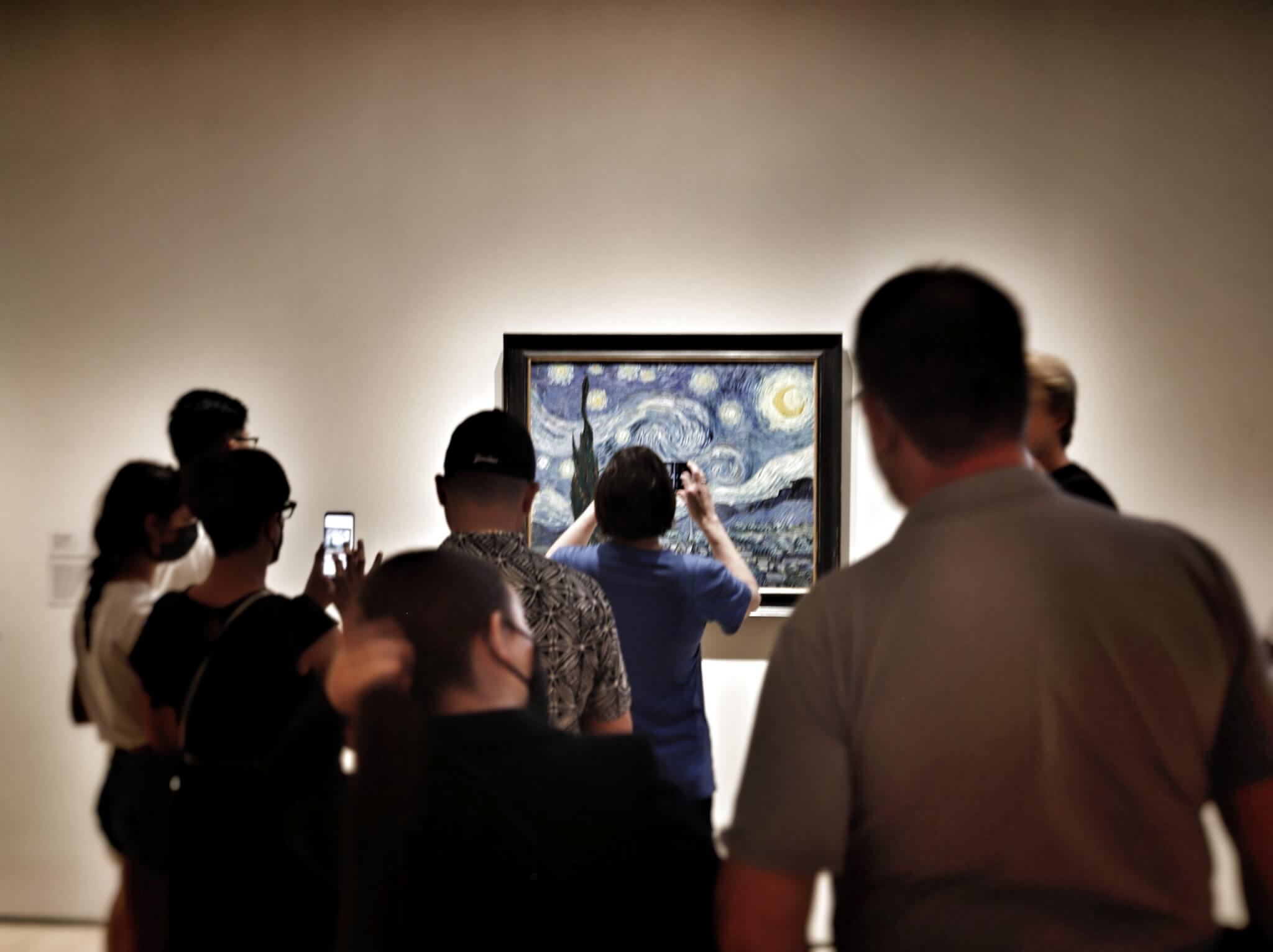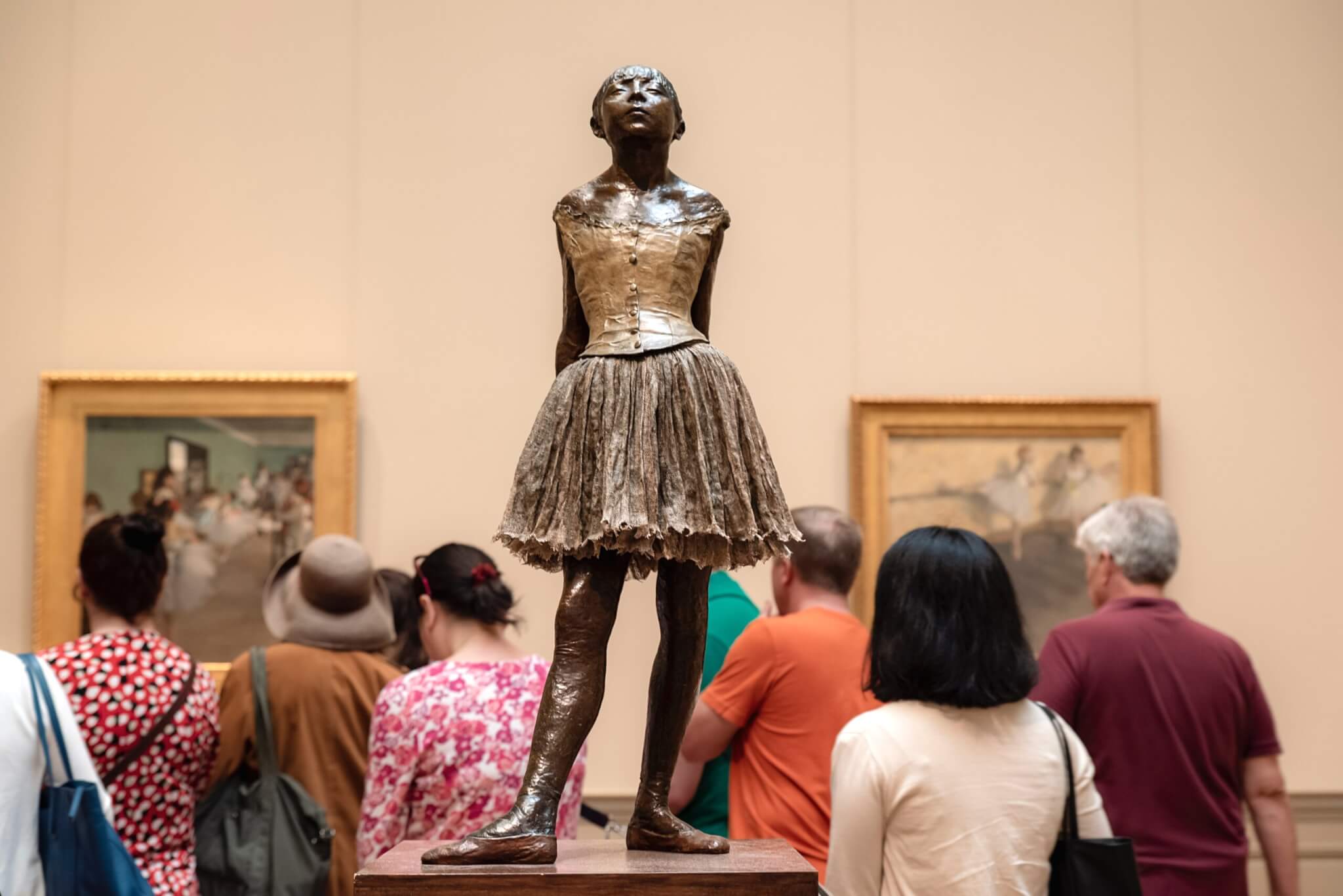How a 5-year study reveals museum-based wellness has the potential to be a ‘miracle cure’ for many
It’s Saturday morning. You are barely awake, with a cup of coffee in your hand, and your gaze wanders to the window. It’s raining. So you make up your mind. This afternoon, you will go to a museum.
But what if, without realizing it, you just made a good decision for your health?
That’s the hypothesis put forward by the Association des Médecins francophones du Canada in 2018, when it launched the museum prescriptions program in partnership with the Montreal Museum of Fine Arts. The project, now completed, has enabled thousands of patients to get a doctor’s prescription to visit a museum, either on their own or accompanied. The aim of the prescription was to promote the recovery and well-being of patients with chronic illnesses (hypertension, diabetes), neurological conditions, cognitive disorders or mental health problems. The decision to write the prescription was left to the discretion of the doctor.
Five years in, this pioneering initiative has inspired other innovative projects. So we are now seeing an increasing number of museum-based wellness activities ranging from museum yoga to guided meditations with works of art, as well as the practice of slow contemplation or “slow looking.”
There’s no shortage of possibilities, and they all help to reinforce the same idea, that art is good for us.

Beyond first impressions
These initiatives have recently made headlines in national media on both sides of the Atlantic, in France and Canada, and are gaining in visibility in the general public. Because of the popularity of these activities, more and more claims are being made that a visit to the museum can have “powerful anti-stress properties,” be a “miracle cure for stress,” or have other “incredible benefits.”
Talk about enthusiasm!
Yet, as a certified neuroscientist, I can’t help but wonder why, given the extraordinarily relaxing effects that are being claimed, crowds aren’t flocking to our museums every day.
And that gives us all the more reason to look at the scientific reports and studies that have recently been published on the subject.
Is art good for you? From intuition to observation
In 2019, the World Health Organization published an extensive report compiling evidence on the role of arts and cultural activities in promoting health and well-being. The authors of this report attempted to move away from the sweeping claim that the benefits of art could constitute a universal solution to health problems, like a type of home remedy.
Instead, they encourage new, more precise and rigorous approaches to looking at the question, based on observation of the psychological, physiological and behavioral responses induced by certain specific components of artistic activity (aesthetic engagement, sensory stimulation, physical activity, etc.).
Actor or spectator?
What’s specific about a museum visit is that it is a so-called receptive artistic activity – in other words, it is not about producing art (painting, drawing, composing). It does, however, have the advantage of being accessible and already well established in our collective habits, making it a good candidate for health prevention.
The question is whether art exposure, alone, is enough to reap its benefits. In other words, does the simple fact of being in contact with art have specific effects?

Healthier consumers of culture
Research has been carried out in England on samples of several thousand individuals whose long-term health indicators were monitored, and who were asked for 10 years to report on their habits in terms of cultural and artistic activities.
This research shows that individuals who regularly (every two or three months, or more) visit cultural venues (theatres, opera houses, museums, galleries) have a 50 percent lower risk of dementia and depression, and a 40 percent lower risk of developing a geriatric frailty syndrome (age-related decline in health and loss of functional independence).
Does that mean that exposure to art could lead to healthier aging?
Perhaps, but whether cultural involvement is the cause of the improvement in health markers observed in these studies, has yet to be confirmed. To do this, cohort studies and randomized controlled trials are required. However, this type of study has yet to be done.
In search of the active ingredients
There is one other question, and it’s a big one! It’s the question of why.
Why would art, and visual art in particular, do me good? What happens in my body when I encounter a work of art, and how does this contact transform me and help to keep me healthier – if this is the case?
This was the question Mikaela Law, a psychology researcher at the University of Auckland in New Zealand, and her colleagues asked in 2021. They reviewed the scientific literature for studies on the physiological response to the visual arts and its effect on self-reported stress.
Some of the studies listed in her work show that contact with artwork can lower blood pressure, heart rate and the cortisol secreted in saliva. Such changes reflect a reduction in the body’s state of guardedness, also called stress. This change appears to be perceived by the individual, reflected by the reduction in the stress he or she feels after exposure.
Other studies, on the other hand, have observed no effects.
So, if contact with visual art is likely to bring about physical and psychological relaxation for the viewer, it may not be a sufficient condition for improved health.
This conclusion invites us to qualify our conclusions and reflect more deeply on what happens at the moment of an encounter with a work that might condition its effects on an individual’s psyche.
Today is Saturday…
You’ve decided you’re going to the museum. This decision will likely be good for your health. It’s also likely to depend on the museum you choose, and how you visit it.
However one thing’s certain: going to a museum means you will greatly increase your chances of having a pleasant day!![]()
Article written by Emma Dupuy, Postdoctoral researcher, cognitive neuroscience, Université de Montréal
This article is republished from The Conversation under a Creative Commons license. Read the original article.

Study Finds that “StudyFinds” is full of excrement
As a museum professional and an advocate for life-long study and learning, I am THRILLED to read this and excited to share with my staff! Thank you! And if you are even in the Palm Springs area, please visit the brand new Agua Caliente Cultural Museum! Relax and rejuvenate in the desert and live longer coming to see us!
The best cure for stress and a long healthy life is regular visits to wilderness areas and getting away from people
Museums have been taken over by the far left. If that is your thing, then you’re good, a museum might just relieve your stress. On the other hand, if you are opposed to being force fed left wing indoctrination, stay clear of today’s art museums. Sure, they talk about being “inclusive,” but they don’t want to include you.